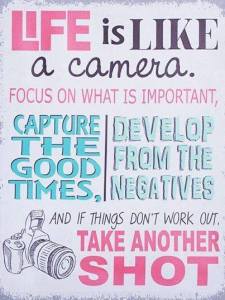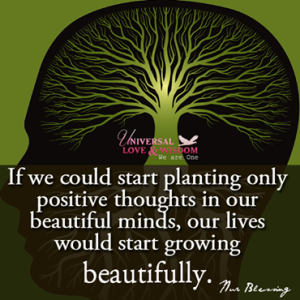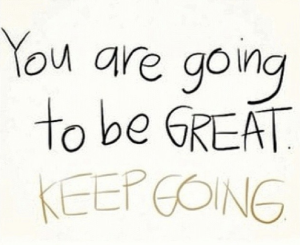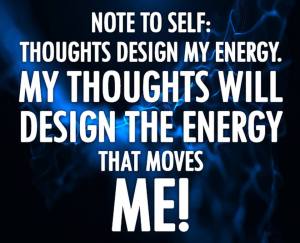
“Have you noticed that when someone does something AND you get angry that a very fast sequence of events occurs? The action by that other person triggers something in you. Perhaps, the person said or did something that offended you. You heard it and realized that it was offensive. That moment is when things really get going.
Thoughts begin to jam into your head. You begin to think of examples and more examples of how the other person is wrong. They are wrong not only now but in the past. One example leads to the next. We find all the reasons they are wrong, We find the reasons everything is wrong!
We blame them for our present discomfort. We blame them for previous discomfort. We begin to get hot, we get louder. Things speed up and we begin to lose control. Our being is flooded with chemicals and hormones and feelings that are less than glorious. We are mad. Boy, are we mad! We may even turn our anger on ourselves too.
We get hot under the collar and then we get hotter and hotter. Pretty soon we are very angry. We may behave in ways that we don’t want to. We hate getting angry. Did you ever notice that it seems difficult to stop being angry during all this? It IS hard to change direction ONCE we get going. Anger and negativity gain in momentum!
It is difficult to stop because as we get angry everything does start speeding up. These ‘hot’ emotions gain velocity. More thoughts, more blames, more negative feelings rush in. Everything escalates. Pretty soon we are in a shouting match.
Why are we shouting at each other? Because the same thing is occurring in the other person. One negtive thought leads to another negative thought. Birds of a feather flock together. Before we know it we are battling. Negativity fosters or attracts more negativity!
The reason for this is because these thoughts and feelings travel well worn, well traveled neural pathways. We have gone this route before, again and again. While different things may cause us irritation we tend to get angry the very same way. In fact, we get frustrated the same way. We get confused the same way. We get turned on the same way. Whatever triggers whichever emotional state in us the result is we move through the emotions pretty much the same way each time.
Researchers estimate that most of our behaviors are the same. We are automatons carrying out programmed activities. We operate by rote. We are habitual and patterned creatures. We work reliably, consistently, producing similar results each time outside of our awareness and conscious control.
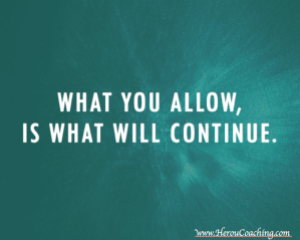
We are mostly unconscious with a little bit of consciousness. We have a little bit of an ability to direct and control. The vast majority of us does whatever it learned to do, over and over again forever, UNTIL we learn to do something else instead. If you doubt this how many different ways do you have that you tie your shoes?
How often do you switch your washing order while bathing. You have a sequence don’t you? How often do you eat with the other hand or chew on the other side of your mouth? How frequently do you take alternate routes to work? Do you ever get dressed in a different order, top down or bottom up? Why or why not? Which foot do you first put your sock on or into your pant leg? We are consistent creatures of habit.
This unconscious consistency is a tremendously valuable ability . We do not have to learn to do things over again each time we do them. We have neural pathway memory. It is streamlined it happens quickly. We don’t have to reinvent the wheel.
But anything that is a resource can also have a downside and vice versa.
When we travel pathways to positivity and productivity swiftly and consistently we deem it a great thing. We are happy we are unconsciously competent and reliable. BUT when the dark side rears its head we loathe the fact that we think and behave poorly, inadequately and ineffectively. Our habits really do determine who we are and what we are able to enjoy!
As infants we pretty much began with a clean slate. We may have genetic predispositions BUT from experience living in our new environment we learned how to react to meet our needs. Our neurology responded to outer (and inner stimuli) and after a few times it no longer needed to respond it simply reacted. Our neurology learned what to do. The sequence fired off reliably from whatever trigger it.
How and why we learned these habitual reactions is not so important. Suffice to say we learned to react and behave this way during our development being surrounded by others. Some people learned to fight at the slightest provocation while others learned to retreat. Some bulldoze over everyone else while others cower and flee. In another situation we may bolt and run it all depends.
There is no blame and no shame in having learned to do things while growing up. These are protective mechanisms as well. Even the least enjoyable and the most negative behaviors have seeds of resources within them. Nothing human is ever wholly negative. It may certainly seem that way though.
The point is that we react reliably. We react the same way. Once triggered a sequence occurs and will travel to the end of the sequence unless it is otherwise interrupted.
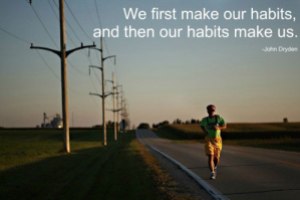
So when we react with anger, or in any way we deem less than glorious, we react habitually the same way. It is important for me to clarify here that I think most, if not all, emotions and behaviors are useful in appropriate contexts. They are resources to be used.
At the right time and place anger (or any other emotion) may not only be appropriate to use but desirable AND the best choice. Anger is the right response at certain times. It is when we don’t want it or don’t need it that it may be an issue.
SO: Similar triggers or events by self, others or circumstances can launch us into a tirade or into running away. The sequence of internal neural firings is mostly the same. The course traveled the same and the outcome the same. That is why people find themselves doing things they don’t want to do again and again. It is a habit. It is in the neural wiring. Something triggers it and before we know it we are in it.
When the trigger occurs there IS a moment of opportunity. It is fleeting! There is a split second in which we could, if aware, disengage and step away from the process. It happens so quickly it may be hard to recognize in order to take advantage of it but with repeated trials one can find it and utilize it to engineer a different result.
When we get angry hot, or scared, chemicals are released in order for us to be able to fight or to flee in order to save our own lives. We were created or we evolved that way. It IS useful in certain situations but not in all the various situations we find in modern life. When humans lived outdoors and had deal with day to day survival these chemicals squirting inside us causing us to react quickly which served an important purpose. It helped us survive! It is much more rare today.
If a wild animal attacks you fighting or fleeing makes sense but if your spouse, boss or co-worker offends you the stakes are not actually the same. They only seem like it. We make it that important but truly the stakes aren’t that high.
Our lives in the modern world are much more tame or calm by comparison however, our neurology still perceives non-threatening situations (insults and disobedience) as ‘life threatening challenges’. They aren’t but we still react as if they are. We learned to.
When these chemicals release and begin to flood us (it is actually called ‘Emotional Flooding’) we react the way we have previously. We yell, scream, throw things, insult, cry, stamp our feet and do whatever we have done. Things escalate. We literally get hot, then hotter and hotter! We are able to actually tell when we are getting confused, frustrated, or angry. We recognize the sequence of neural and chemical firings. We can feel the changes occurring. We know what is happening but it seems outside our control.

An example I have frequently used to illustrate what happens when we become flooded with chemicals and emotions is to imagine a snowball on the top side of a mountain. Something triggers it to roll down the hill. As it begins to roll downhill it picks up snow, mass or weight, and more energy. It’s velocity increases. It begins moving faster and faster all the while growing larger. While it grows in size and weight it grows in speed. It becomes a one giant steamrolling monster snowball. It can cause lots of damage on the way down.
Trying to stop it once it is of considerable size would be like trying to stop an automobile coming at you at 60 miles an hour. There is too much mass too much speed. It has gained momentum.
If you could stop it at the very beginning you could easily prevent the rest from occurring. You’d want to intercede between the trigger and its first movement. You have to catch it right as it begins to move because as soon as it picks up speed it becomes to difficult to stop. You’d need an equal and opposite or greater force.
If a snow ball is difficult for you to imagine think of a truck parked on the hill. The brakes give way and it begins to roll. If right at first you stepped in front of it you could stop it with your body or just by pushing back on it with you hands. It was moving slowly and it had not gained much momentum. Had it traveled too many feet you had best jump out of the way. It has gained too much momentum for you to stop it.
So when we fight or argue with another person there is a flash point, the trigger, and things get moving and pretty quickly after that. Fairly soon everything is moving along at top speed. There is momentum.
The less than glorious thoughts and feelings have gained mass and velocity so it keeps moving on its own accord. You don’t have to do anything to keep it moving. The snowball and the truck careen down the hillside due to momentum.
So the trick is to catch it before it gets too far and to stop it. We will explore this is further detail in future posts. What I want you to know now is that most of us are familiar with this form of negative momentum. Many of us do want to change it. We actually can change it. That is the good news?
What fewer of us realize is that just as there is negative momentum there is positive momentum. We could be flooded with positive powerful wonderful feelings more often but few of us have developed this as a habit. Thoughts and chemicals are released when we move into states of well-being, peace, joy, and happiness.
Wouldn’t it be nice to reduce or eliminate the negative unnecessary flooding? Wouldn’t you like to experience positive emotional flooding more often? I know I do.

The good news is that we can. We can be filled with the most incredible and delightful feelings more of the time during our days and nights. We can be feeling wonderful most of the time once we take the time to learn how. We need to wire it in just as we wired in the fight or flight patterns. We are able to learn to do this!
The difference NOW however, is that previously we learned how to do those habits without realizing we were learning them. We did all that outside of our awareness. We learned it unconsciously. We didn’t realize at the time, most probably because we were very young, that we were learning and reinforcing patterns we might keep for a lifetime.
Now, today, we want to go in and deliberately change these to learn other more productive patterns and habits. Now we are deliberate about it. This makes a huge difference for some people. This sets apart the victims from the victors.
The victims, given the choice, don’t use it. They whine and complain that it is too hard to change. They state that they believe it is not realistic to be happy all the time. This reasoning comes from their habitual patterned way of thinking. Yes, they find all the reasons why it can’t and won’t work.
Why? because they have spent a life time gathering evidence for the beliefs they maintain. We all do. If you believe something you will find the evidence for it.Our frames of mind determine what we are able to notice and pay attention to.
This is why our reality is ‘we see what we believe’ more than the other way around. Sadly, most of us won’t believe it until we get evidence for it AND it just doesn’t actually work that way neurologically.
Instead of trying something new they opt to remain the same. They maintain the status quo. They remain the same because this is how they previously have thought all along. They continue to maintain what they already think. They don’t challenge it or really try to change it. Seem my previous posts discussing Premature Cognitive Commitment.
IF they DO try they don’t stick with it long enough to learn to do something new, different and productive. Instead they take a step or two, stumble or fall and then they don’t bother to get up or even try to. They give up! Those that succeed in any endeavor fall many times but they get up and continue forward. That is how you get success.
The victims decide, because of a previous decision made god knows when, that they can’t change, it is too hard or that trying isn’t worth it. They already are convinced that nothing works. However, if they had stuck with it long enough they would prove themselves wrong.
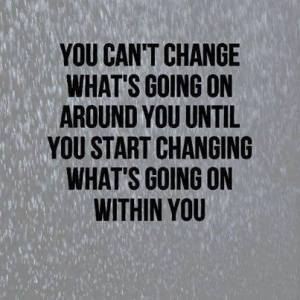
People get uncomfortable when they are confronted with the fact that they might be wrong. They will do whatever is necessary to maintain the status quo even if it IS not correct. This is called Cognitive Dissonance.
People will keep doing the same things over and over hoping for different results (the definition of insanity) but getting the same results. When they get the same results, they exclaim, ‘see I told you there was no point’. It is a self reinforcing cycle. A self fulfilling prophecy.
In a nutshell it goes something like this. The person does not expect to be able to change, they think people are just the way they are. They try to change but realize it might be difficult so they quit thus proving it is hard to change because you are what you are, after all.
So for some people deciding to make change can be tricky. They wil find every excuse possible because it is more comfortable to cling to the excuse than it is to discover you may have been wrong in your thinking for many years. I point this out not to blame anyone. We are all susceptible to this, especially me, but to bring light to some of the reasons we might not act in our own best interests.
We can change! We can absolutely change! As I stated we will continue to explore how to get free, to make positive decisions and to create positive momentum. Many of the ways of doing this have been shared in previous blog posts. Re-read or read them for the very first time.
There are life transforming principles and practices in these pages. Some of these are my approaches and many of these are tried and true approaches shared by others far smarter and wiser than I. There are gold nuggets in these pages and in the pages of the works of wisdom down through the ages. All you have to do is begin using these.
Once we learn to think on the positive side of things it gets easier. Positive thoughts and feelings attract positive thoughts and feelings. We flood with chemicals and hormones of well being, peace and joy. Birds of a feather flock together. Then positivity and well-being gain in momentum.
Continue to do this and make it a habit. Take positive steps moment to moment, daily. You see, we do become what we think about.
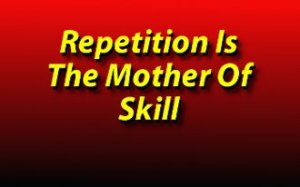
We BECOME what we think about! There is a tipping point where we are predominantly positive instead of predominantly fine, or less than glorious or downright negative. We can tip the scales in our favor and feel wonderful more of the time! We can choose to be happy most of the time.
HOW? By doing as I have suggested in these posts. By filling your mind with positive inspirational material. By visualizing your life as you want it to be. Imagine already having what you want to be, feel, do and have.
Recite positive affirmations with energy and enthusiasm. Use Directed Questions to aim your mind into positive possibilities. The secret is simple. As Earl Nightengale said, it is the strangest secret because it is so simple, and that is ‘we become what we think about’.
Decide to be the author of your life story, the captain of your ship, the one in charge of you. Decide today to do things that help you think and feel better. Commit and encourage these thoughts, feelings and behaviors. Nudge them along, nurture them, inch your way if you want but create forward movement. Drop by drop the tub fills. Little things done repeatedly make a big difference.
There are consequences to the decisions and actions you take! You can change an outcome by changing your decisions and actions positively. You are responsible for the results you get or do not get. Which are you victim or victor? What will you do today?” Rex Sikes
Delight another and you delight yourself!
Subscribe and Follow Daily Inspiration and Gratitude! Visit often. Feel free to comment. If you think others would benefit please share this blog with others.
Like this:
Like Loading...
